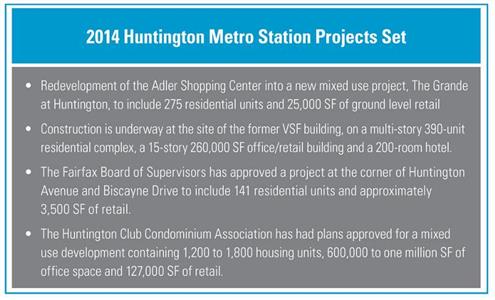The Richmond Highway corridor, that stretch of Route 1 from the southern edge of Alexandria to Fort Belvoir, which once pioneered Fairfax County’s commercial development, is again showing signs of life.
First known as part of the Native American’s Potomac Path, it later became the road to Mount Vernon and then a part of the Post Road extending from Maine to Florida. Its development mirrors the history of Southeast Fairfax County.
For the first time in years, the corridor is seeing a building boom, fueled by the relocation of nearly 20,000 military and civilian employees to Fort Belvoir. This relocation on the southern end of the corridor was a result of the 2005 Base Realignment and Closure Commission (BRAC).

Facilitating the growth is the Southeast Fairfax Development Corporation, a nonprofit organization that promotes the economic revitalization. The SFDC has been around for more than 30 years, but its current executive director Edythe Kelleher says recent developments have “started to change the feel of the corridor.”
“Since 1981, SFDC has helped direct nearly $2 billion of private investment to the Richmond Highway corridor, and more exciting developments are on the way” Kelleher predicted.
This was one of the few areas in Fairfax County that had not seen redevelopment, but “when the economy started to improve, we were primed for it,” she says.
The area benefits from its proximity to the Huntington Avenue Metro Station, and easy access to I-495, making it a convenient location for commuters to Washington, D.C., Maryland and Northern Virginia. More than 35,000 vehicles travel the highway daily. The widening of Richmond Highway, scheduled for completion by 2016 as part of the federal BRAC funding, has improved bus and car traffic flow. The Virginia Rail and Public Transportation Study is also developing a “Multimodal Transportation Alternatives Analysis” for the corridor.
Nearly 400 retailers dominate the commercial real estate market along the 7.5 mile stretch of Route 1, occupying close to 4 million square feet. This includes a new 143,416 SF Costco store at 7940 Richmond Highway which opened last August. The $24 million project added 100 new jobs at the store, and transferred more than 100 jobs within the company. Further south along Richmond Highway, retailers have already begun opening shops in the newly constructed Fordson Place.

Retailing has been relatively strong with current vacancy rates hovering around 6 percent, which is slightly higher than the overall rate for the Washington, D.C. metropolitan area market. That rate dropped to 4.4 percent in the fourth quarter of 2013, according to figures released by the CoStar Group in its 2013 annual retail report.
With 1 million square feet of office space, the corridor has lagged the Northern Virginia office market. However, during the past year the corporate campus at Fort Belvoir has added the North and South Buildings with 121,236 SF apiece, and the nearby Kingstowne Ridge project added another 110,047 square feet.
Coming on line in 2014 will be the 65,000 SF addition to the Inova Mt. Vernon Hospital. The $43.6 million expansion will include a new patient tower, two new operating rooms and enhancements to the medical surgery, orthopedics, joint replacement and rehabilitation services. The hospital has a 21,000 SF addition to its emergency room planned to begin later this year.
“All of these projects are also going to need tenants and retailers in order to be successful,... We are becoming a destination, not just an area to pass through.”
Looking to the future, Kelleher predicts new development moving further south along the corridor that is not just “newer and nicer,” but also provides greater density for commercial activity, especially at “nodes like Huntington Metro and Penn Daw.”
Among the projects is the demolition of the 50-year-old Penn Daw Plaza, and its planned replacement with a mixed use development of 490 apartments and townhouses with ground floor retail. Rezoning for the project was approved by the Fairfax County Board of Supervisors in January. Also included in the Pen Daw neighborhood is The Shelby, a new 240-unit luxury apartment building with a planned fall opening at the corner of N. Kings Highway and School Street.
Hotel construction is also flourishing. Once the home to numerous highway motels, the industry fell into decline with the construction of Shirley Highway and interstate 95 heading south to Richmond. Most of the old buildings have now been demolished, replaced by new hotels serving not only the visitors to the historic area around Mt. Vernon and the military facilities at Fort Belvoir, but also tourists seeking a lower cost alternative to the luxury hotels throughout the Washington, D.C. market.
One of SFDC’s roles is working with developers, county officials and community neighborhoods to facilitate the projects and cooperation among the entities involved.
“It is a real challenge to find the property that works for development,” Kelleher explained. “The real estate community can help by working with the current property owners and developers to identify additional projects, gain support and consolidate properties into enough acreage to develop.
“All of these projects are also going to need tenants and retailers in order to be successful,” she added. “We are becoming a destination, not just an area to pass through.”
The future for the Richmond Highway corridor is rapidly “passing through” from plans to reality…there’s new life in those old dreams.